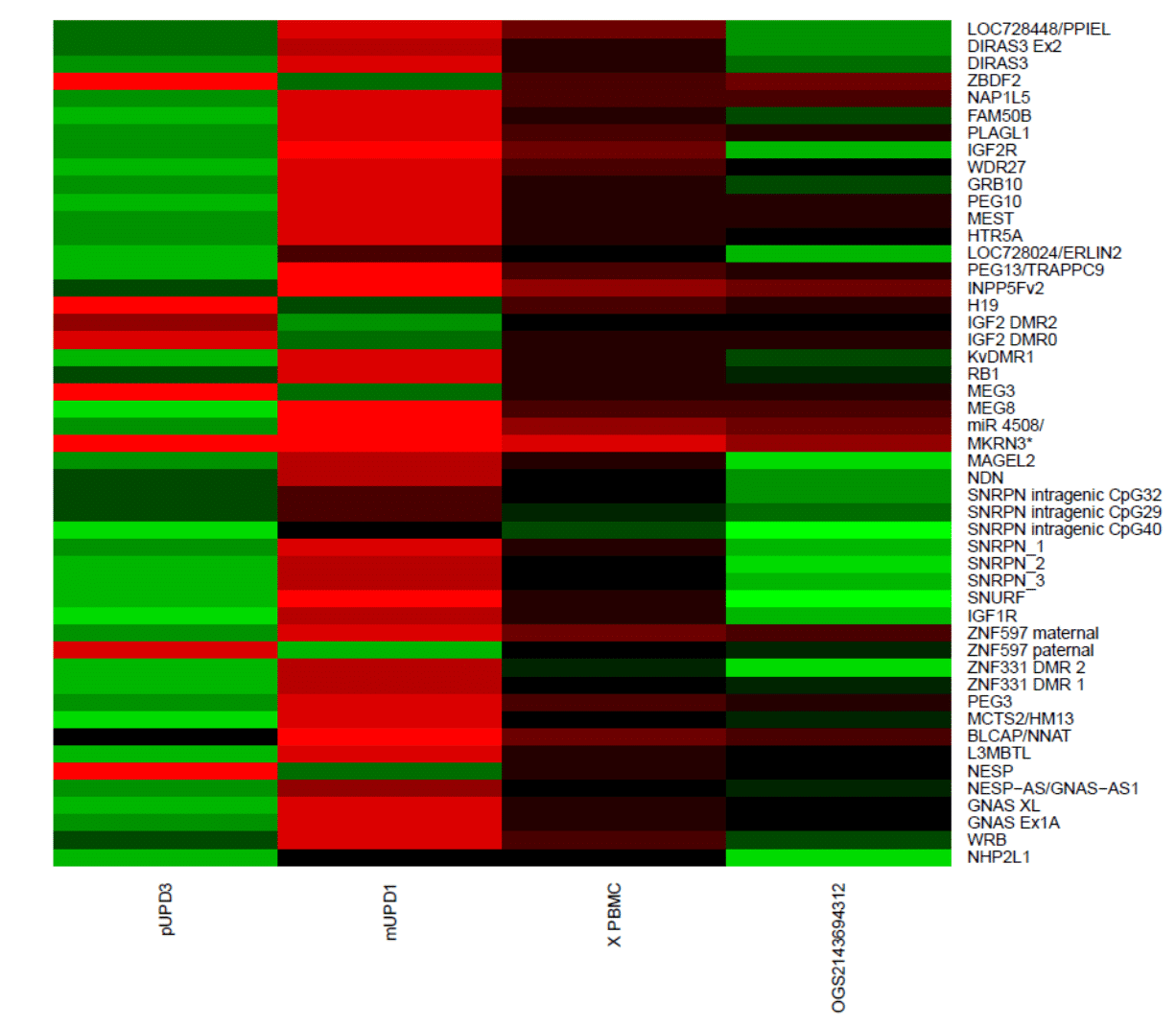Introduction: Imprinted genes are genes whose expression is dependent on parental origin, and are transcribed only from one specific parental allele (monoallelically expressed). The differences in expression are regulated by differentially methylated regions (DMRs) or imprinting control regions (ICRs), which acquire their methylation pattern during gametogenesis. The pattern is maintained throughout development and cell divisions.
Case Presentation: The patient is an 8 –year-old boy who presents with classic clinical features of both Beckwith–Wiedemann syndrome (BWS) and Angelman syndrome (AS). Conception was natural. The pregnancy was complicated by a moderate polyhydramnios. A large, protruding tongue, left postauricular pits and mild hepatomegaly were noted in the neonatal period, the umbilicus was normal. He had considerable feeding difficulties since birth with failure to thrive. Global development was markedly delayed. He walked independently at 6 years of age; he still has no words and is not potty trained. He has a happy demeanor, marked hyperactivity and sleep disturbances but no seizures.
Molecular Analysis: Molecular analysis demonstrated loss of the normal maternally derived methylation at both the KvDMR1 (also: LIT1, KCNQ1OT1; 11p15; Beckwith–Wiedemann syndrome) and SNRPN (15q11; Angelman Syndrome) loci.
Sequence Analysis:

Discussion: Approximately 100 imprinted genes are currently known in humans and out of them eight imprinting disorders are recognized: the Beckwith-Wiedemann (BWS), Silver–Russell (SRS), Prader–Willi (PWS) Angelman (AS), Temple (TS ), and Wang syndromes (WS), Transient neonatal diabetes (TND), and Pseudohypoparathyroidism type 1b (PHP1b). Imprinting disorders (IDs) result from epigenetic (or primary) mutations, and genetic (or secondary) mutations in both cis and trans acting factors, including copy number variations, chromosomal rearrangements and uniparental disomy. Additionally, IDs can present mosaically, that is, not uniformly present in all somatic tissues.
Conclusions: We describe here, for the first time, a patient with unique clinical features suggestive of both AS and BWS, who was found to exhibit hypomethylation of both imprinted loci. The case gives an opportunity to identify a trans-acting factor that might impact on maintenance of maternal imprinted methylation during the preimplantation epigenetic remodeling process.

